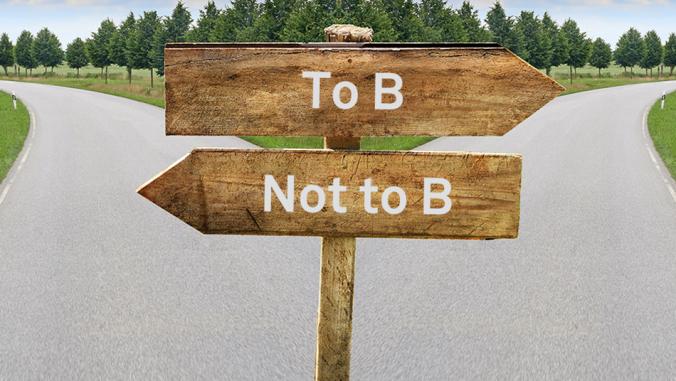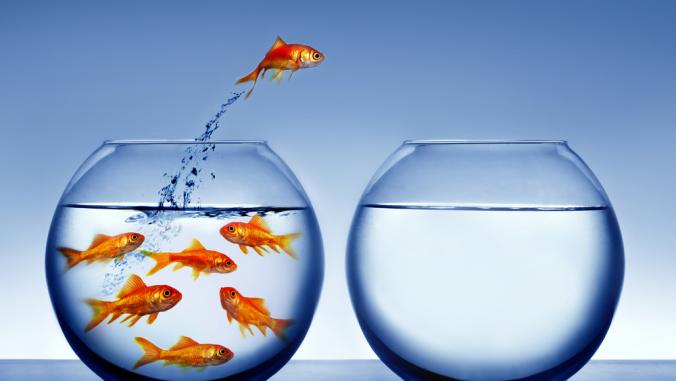Is It Possible to Make a Hamburger Greener?
<p>It's estimated that beef provides about 1.3 percent of the world's calories, but uses 60 percent of the world's farmland to do so. So why is the World Wildlife Fund trying to create a plan for sustainable beef production?</p>

Plastic bags, SUVs and hamburgers: No right-thinking tree-hugger would endorse them, at least not in public. But here's the thing: While we can replace plastic bags with reusable ones, and we can electrify our SUVs, the world's consumers will almost surely demand more, not less, beef in the years ahead.
Which is why the World Wildlife Fund has begun a conversation about, of all things, sustainable beefThe WWF, led by Jason Clay, its iconoclastic senior vice president for "market transformation," last fall convened a Global Conference on Sustainable Beef, bringing together environmentalists, academics and industry giants including McDonald's, Walmart, Cargill and JBS, a Brazilian company that calls itself "the largest animal protein processing company in the world" and owns U.S. brands Swift and Pilgrim's Pride.
The goal? To improve sustainability within the beef industry.
 The surprise? That one solution may be -- may be -- to encourage beef producers around the world to behave more like those in the U.S. and Europe, which rely on much-maligned Concentrated Animal Feeding Operations (CAFOs) to produce more beef while using less land, water and feed than producers elsewhere. The issue, Jason says, is whether it is better to have animals on pasture for four years (as in Brazil) and producing a lot of methane, or whether it's better to slaughter animals in two years or less, including some time in a CAFO to increase the weight to acceptable levels.
The surprise? That one solution may be -- may be -- to encourage beef producers around the world to behave more like those in the U.S. and Europe, which rely on much-maligned Concentrated Animal Feeding Operations (CAFOs) to produce more beef while using less land, water and feed than producers elsewhere. The issue, Jason says, is whether it is better to have animals on pasture for four years (as in Brazil) and producing a lot of methane, or whether it's better to slaughter animals in two years or less, including some time in a CAFO to increase the weight to acceptable levels.
Needless to say, this is likely to be a controversial undertaking.
Still, one thing we can agree upon is this: There's lots of room for improvement in the beef biz.
In his presentation (available for download, here), Jason says beef production generates about 1.3 percent of the world's calories but uses 60 percent of all the land used to produce food. Beef production also consumes disproportionate amounts of water and energy, and is a leading cause of deforestation in Brazil.
It's hard to imagine a less efficient way to feed people. An oft-quoted but sometimes disputed 2006 report by the United Nations Food and Agriculture Organization (FAO) found that livestock raised for meat or milk production cause more greenhouse gas emissions than the entire transport industry -- between 14 and 22 percent of global emissions.
That U.N. report also said: "Global meat production is projected to more than double from 229 million tonnes in 1999/2001 to 465 million tonnes in 2050, while milk output is set to climb from 580 to 1043 million tonnes." People tend to consume more meat as their income grows.
To feed a growing population on a finite planet, Jason says: "We need to freeze the footprint of food ... We need to use resources more efficiently and intensify production."
When we spoke by phone, he elaborated a little on what sustainable beef might look like. What's required, above all, is setting aside emotion and focusing on a series of science-based, measurable outcomes; they would likely include reducing land use, water use, energy use and greenhouse gas emissions, as well as protecting natural habitat.
"Beef is not going away, so it needs to be more efficient," Jason says. "The best producers are 100 times more productive than the worst -- because of lack of knowledge, poor soils, poor lands, lack of rainfall, whatever."
The U.S. and Brazil are the world's biggest producers of beef, while the U.S. and China are the biggest consumers. (The chart at left covers all meat, but China is also the No. 2 consumer of beef.)
 U.S. beef producers, however, are far more efficient than the Chinese, according to a presentation from JBS and Cargill. (Available for download here as Overview Global Beef.) It says that U.S. producers generate 49.9 kilograms of beef per hectare of pasture per year, compared to 14.4 kg for the Chinese. U.S. producers also get 125.7 kilograms of beef per cow, far more than the Brazilians or the Chinese.
U.S. beef producers, however, are far more efficient than the Chinese, according to a presentation from JBS and Cargill. (Available for download here as Overview Global Beef.) It says that U.S. producers generate 49.9 kilograms of beef per hectare of pasture per year, compared to 14.4 kg for the Chinese. U.S. producers also get 125.7 kilograms of beef per cow, far more than the Brazilians or the Chinese.
That's because CAFOs can be a lower-impact way to produce beef, though there is a lot of variation globally, says Jason.
Others, though, argue that CAFOs externalize their costs. In an influential 2008 article about meat in The Times, food writer Mark Bittman said:
Global demand for meat has multiplied in recent years, encouraged by growing affluence and nourished by the proliferation of huge, confined animal feeding operations. These assembly-line meat factories consume enormous amounts of energy, pollute water supplies, generate significant greenhouse gases and require ever-increasing amounts of corn, soy and other grains, a dependency that has led to the destruction of vast swaths of the world's tropical rain forests.
Foodies, meanwhile, say they love the taste of grass-fed beef. But Jason told me: "As we start looking at greenhouse gases, grass-fed beef is probably the worst option." That's largely because allowing cattle to roam freely requires a lot of land, a 100 percent grass diet produces lots of methane that cannot be captured in the pasture; also, large-scale ranches can contribute to deforestation and water pollution.
The only way we'll sort all this out is with good science. Jason says environmentalists will work with the industry to identify and disseminate science-based best practices and standards around beef, just as WWF has done before with similar efforts that led to the Marine Stewardship Council (to promote sustainable fishing) and the Forest Stewardship Council.
Wouldn't it be better, I asked Jason, for groups like WWF to urge people to eat less beef? A diet with more vegetables and less meat is likely to be healthier for people and the planet.
"People in the U.S. and Europe should eat less beef," he replied. "But I don't think the world should produce less beef and that we should all become vegetarians…Animal protein is important in diet and nutrition, whether it's mother's milk or cow's milk….Also, most of the land used for beef couldn't be used to grow vegetables."
Hmm. The search for a "greener' hamburger is going to be interesting to watch.





